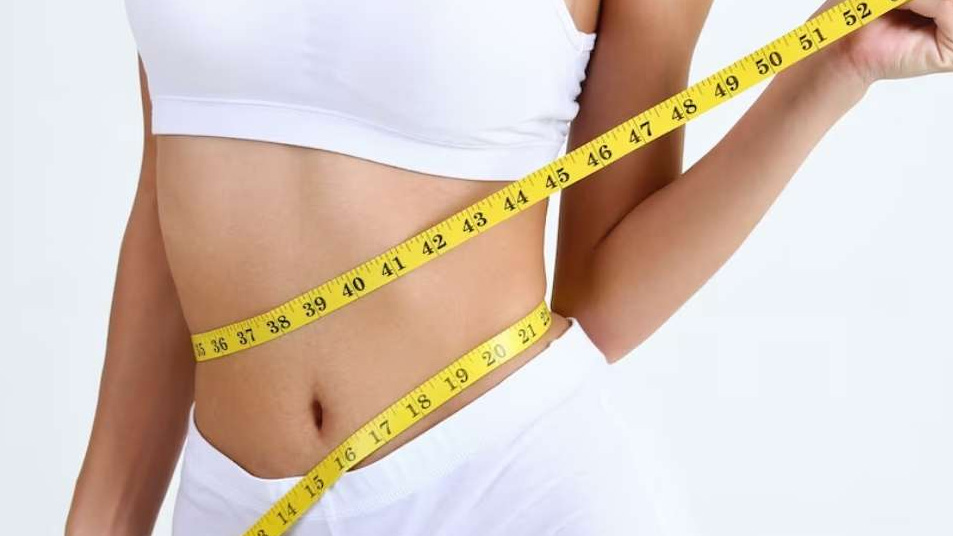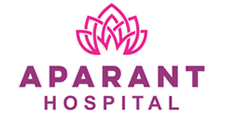
Liposuction
Liposuction, often called "Lipo" is a cosmetic surgical technique used to remove extra fat from particular body parts. It's frequently used to reshape and contour the arms, neck, buttocks, thighs, hips, and belly, among
other places. To eliminate fat deposits, a suction method is used in the treatment.
Liposuction is a method used for cosmetic fat removal. It has the ability to permanently eliminate adipocytes, or fat cells, from a specific area of your body that you wish to lose weight in. When diet and exercise fail to
reduce fat accumulation, liposuction can assist.
Key Points About Liposuction :
Liposuction is ideal for those who are almost at their optimal weight but have trouble-some fat deposits that don't go away with diet and exercise. It's essential to establish reasonable expectations and get the advice of a
licensed and skilled plastic surgeon to ascertain whether the operation is right for you.
Few key points to be considered regarding Liposuction :
1. Purpose : Liposuction is used for body contouring rather than weight loss. It’s most effective for people who have localized fat deposits and good skin elasticity.
2. Procedure : During the procedure, a surgeon inserts a thin tube called a cannula through small incisions. The cannula is used to loosen fat, which is then suctioned out. The procedure can be done under local or general anesthesia, depending on the extent and area of fat removal.
3. Types of Liposuction :
Tumescent Liposuction : The most common type, involving the injection of a large volume of anesthetic solution into the fatty tissue before removal.
Ultrasound-Assisted Liposuction (UAL) : Uses ultrasonic vibrations to liquefy fat cells, making them easier to remove.
Laser-Assisted Liposuction (SmartLipo) : Uses laser energy to liquefy fat cells.
Power-Assisted Liposuction (PAL) : Utilizes a vibrating cannula to break down fat cells.
4. Recovery : Recovery times vary depending on the amount of fat removed and the area treated. Swelling, bruising, and discomfort are common after the procedure. Compression garments are often recommended to help reduce swelling and support the treated area.
Purpose of Liposuction :
Liposuction is a type of cosmetic surgery used to improve body proportion and contour by removing extra fat deposits from particular body parts. Its goal is to target and remove localized fat deposits that are resistant to
diet and exercise, rather than providing a weight-loss solution. Liposuction is frequently performed on the back, neck, arms, buttocks, thighs, and abdomen.
The primary purposes of liposuction include :
1. Body Contouring : Liposuction helps sculpt and shape the body by removing stubborn fat deposits, resulting in a more aesthetically pleasing silhouette.
2. Fat Reduction : It reduces the amount of fat in specific areas, which can be particularly useful for those who have achieved a healthy weight but still struggle with localized fat.
3. Improving Proportions : By selectively removing fat, liposuction can enhance body proportions and symmetry, improving overall appearance.
4. Boosting Confidence : Many people seek liposuction to feel more confident and comfortable in their bodies, especially when clothing fits better and they achieve their desired body shape.
While liposuction can provide significant cosmetic benefits, it's important to note that it is not a substitute for
a healthy lifestyle, and the best results are often maintained through a balanced diet and regular exercise.
Additionally, as with any surgical procedure, there are potential risks and complications, so it's essential to
consult with a qualified and experienced surgeon to determine if liposuction is appropriate for an individual's
specific needs and goals.
Procedure of Liposuction :
Liposuction is a cosmetic surgical procedure designed to remove excess fat deposits from specific areas of the body, such as the abdomen, thighs, arms, neck, or buttocks. It aims to reshape and contour the treated areas.
Here’s an overview of the typical steps involved in the liposuction procedure:
Pre-operative Consultation : The surgeon will review your medical history, discuss your goals, and assess your general health. They'll evaluate the areas to be treated and discuss the potential results and risks. You may be advised to stop taking certain medications, refrain from smoking, and follow specific dietary guidelines.
Anesthesia : Local Anesthesia numbs the specific area being treated; the patient is awake. The sedation is often combined with local anesthesia to help the patient relax. In General Anesthesia the patient is completely asleep during the procedure. This is usually used for larger areas or more extensive procedures.
Marking the Target Areas : The surgeon will mark the specific areas on the body where fat will be removed. This helps guide the procedure and ensures precise results. Later small incisions (usually a few millimeters) are made in the skin near the targeted fat deposits.
Tumescent Solution Injection : A tumescent solution (a mixture of saline, local anesthetic, and epinephrine) is injected into the targeted fat deposits. This mixture lessens bleeding, numbs the region, and facilitates the removal of fat.
Fat Removal : A thin, hollow tube called a Cannula is inserted through the incisions. The cannula is moved back and forth to loosen the fat, which is then suctioned out using a vacuum or syringe attached to the cannula.
Contouring and Sculpting : The surgeon will carefully sculpt and contour the treated area to ensure a smooth and natural appearance. They will check for symmetry and balance.
Incision Closure : The small incisions are either left open to drain or closed with sutures, depending on the specific technique and the amount of fat removed.
Types of Liposuction :
Several types of liposuction techniques have been developed, each with its own approach and technology. Here are the main types of liposuction:
Tumescent Liposuction :
This is the most common form of liposuction. A large amount of saline solution, local anesthetic (lidocaine), and a vasoconstrictor (epinephrine) is injected into the area to be treated. The mixture lessens blood loss, numbs the region, and facilitates the removal of fat. After that, the fat is suctioned out using a tiny
cannula.
Ultrasound-Assisted Liposuction (UAL) :
This technique uses ultrasound energy to liquefy the fat cells, making them easier to remove. It can be particularly useful for fibrous areas of the body like the back or male chest.
There are two main types of UAL:
External UAL : The ultrasound is applied above the skin.
Internal UAL : A specialized cannula emits ultrasound energy to target fat cells.
Laser-Assisted Liposuction (LAL) :
Also known as laser lipolysis, this technique uses laser energy to liquefy fat cells. A small laser fiber is inserted through a small incision, and the energy breaks down the fat, which is then removed by suction. LAL may also help tighten the skin.
Power-Assisted Liposuction (PAL) :
This technique makes use of a particular, quickly vibrating cannula. The vibrations help to break up the fat cells, making them easier to remove. PAL can be quicker and less physically demanding for the surgeon, which may result in a shorter procedure time.
Water-Assisted Liposuction (WAL) :
Also known as water jet-assisted liposuction, this technique uses a pressurized stream of saline solution to loosen fat cells before they are removed. The water jet helps to dislodge the fat, which is then suctioned out. This method can be gentler on the surrounding tissues.
VASER Liposuction :
VASER (Vibration Amplification of Sound Energy at Resonance) liposuction uses ultrasound technology to emulsify fat cells. It is similar to UAL but is more precise, allowing for more targeted fat removal. VASER liposuction is often used for body contouring and sculpting.
SmartLipo :
A specific brand of laser-assisted liposuction, SmartLipo uses laser energy to liquefy fat cells. It is known for causing minimal bleeding and bruising and is often used for smaller areas.
Each type of liposuction has its own advantages and is chosen based on the patient's needs, the area of the body being treated, and the surgeon's expertise. It's important to consult with a qualified plastic surgeon to determine the most appropriate technique for your situation.
Recovery after Liposuction :
Recovery after liposuction varies depending on the extent of the procedure, the areas treated, and individual factors such as overall health and adherence to post-operative care instructions. Here are some general guidelines and what to expect during the recovery period:
Immediate Post-Operative Period :
After the procedure, you'll likely be monitored for a short period before being discharged. Some patients might need an overnight stay, especially if they had a more extensive procedure. You'll usually be required to wear compression garments to help reduce swelling, support the treated areas, and help the skin adapt to its new contours. These are typically worn for several weeks. Some fluid drainage from the incisions is
normal in the first few days. Your surgeon might place drains to help prevent fluid buildup.
First Few Days :
You may experience pain, soreness, and bruising. Antibiotics and painkillers may be recommended to treat discomfort and stop infection. Rest is essential, but light walking is encouraged to promote circulation and prevent blood clots.
First Few Weeks :
Bruising and swelling are frequent and may persist for several weeks. They will gradually subside. You'll have follow-up appointments to monitor your progress and remove any stitches or drains. You can gradually resume normal activities, but strenuous exercise should be avoided for at least 4-6 weeks or as advised by your surgeon.
Long-Term Recovery :
Results and Final Shape : Initial swelling may mask the final results, but improvements will become more noticeable as swelling decreases. It can take several months for the final results to be fully visible.
Scarring : Scars from the incisions will fade over time but may take several months to a year to mature
fully.
Care and Precautions :
Healthy Lifestyle : Maintaining a stable weight through a balanced diet and regular exercise is crucial to preserve the results of the liposuction.
Avoid Smoking : Smoking can impair healing, so it’s advisable to avoid it before and after surgery.
Follow Surgeon's Instructions: Adhering to all post-operative care instructions provided by your surgeon is vital for optimal recovery and results.
Potential Complications :
While liposuction is generally safe, there are potential risks, including infection, blood clots, irregular contours, changes in skin sensation, and prolonged swelling or bruising. Contact your surgeon if you experience severe pain, excessive swelling, or other concerning symptoms.
Recovery experiences can vary widely, so it's important to discuss your specific recovery plan and any concerns with your surgeon.
